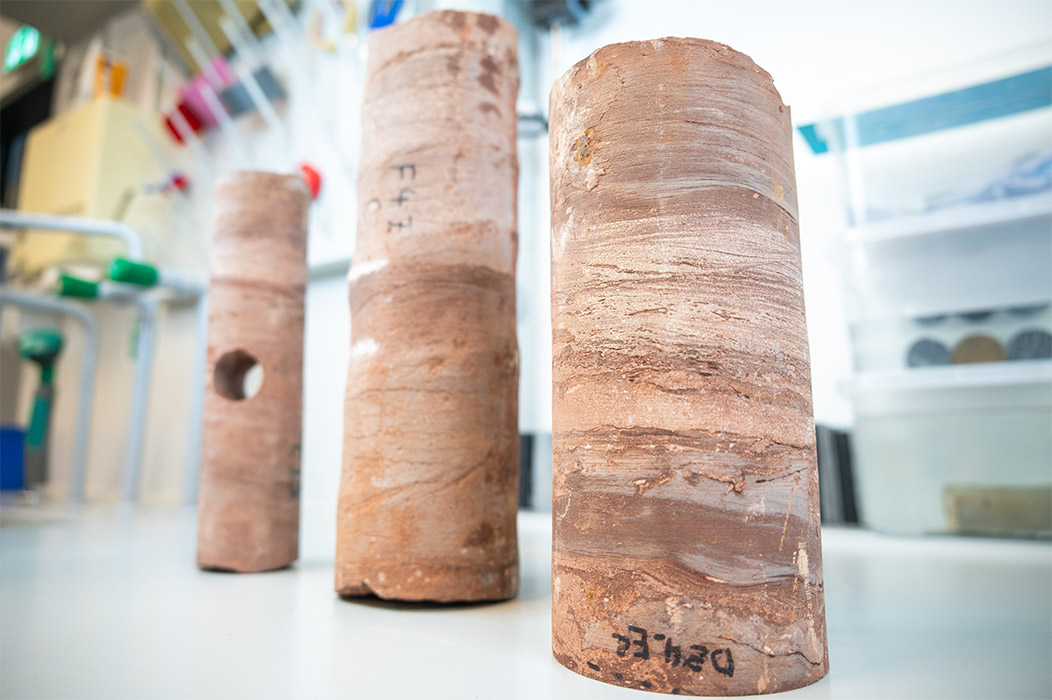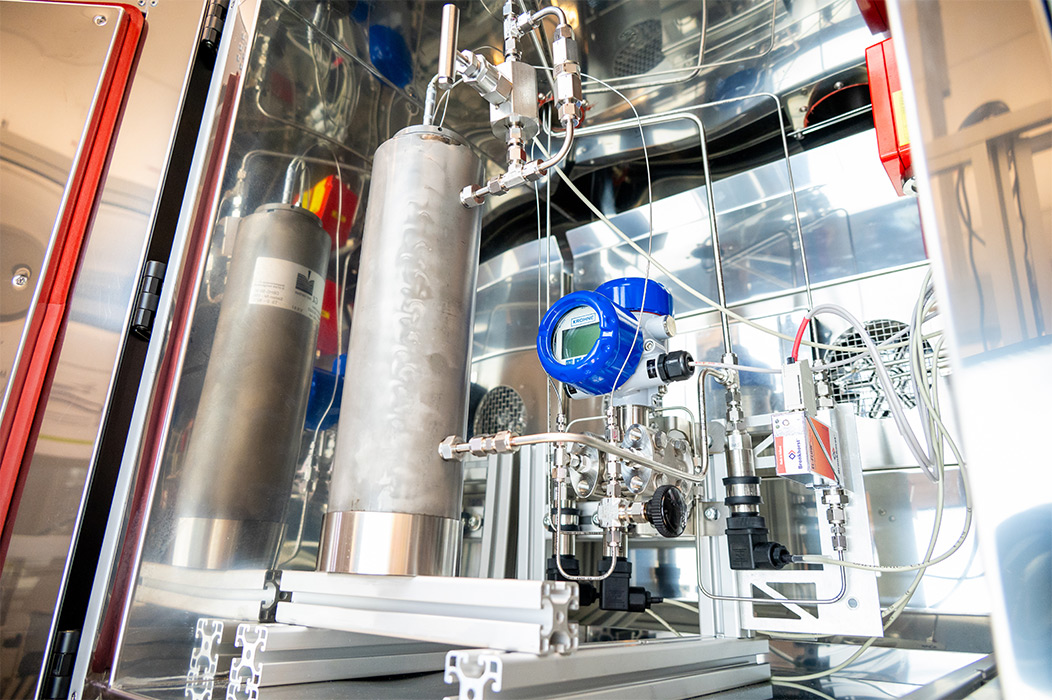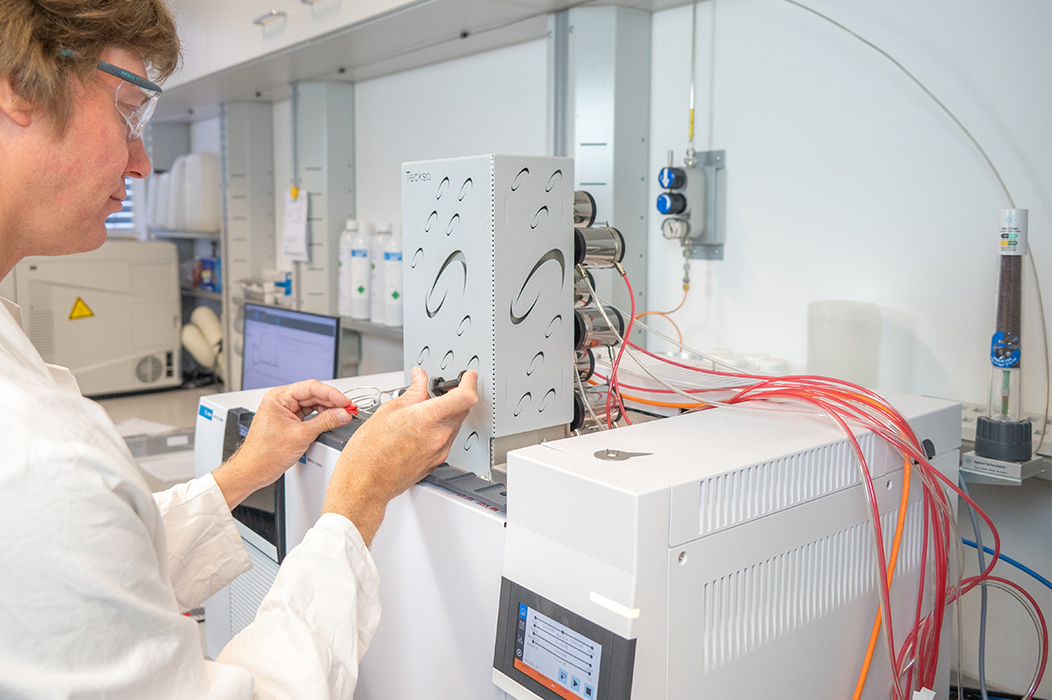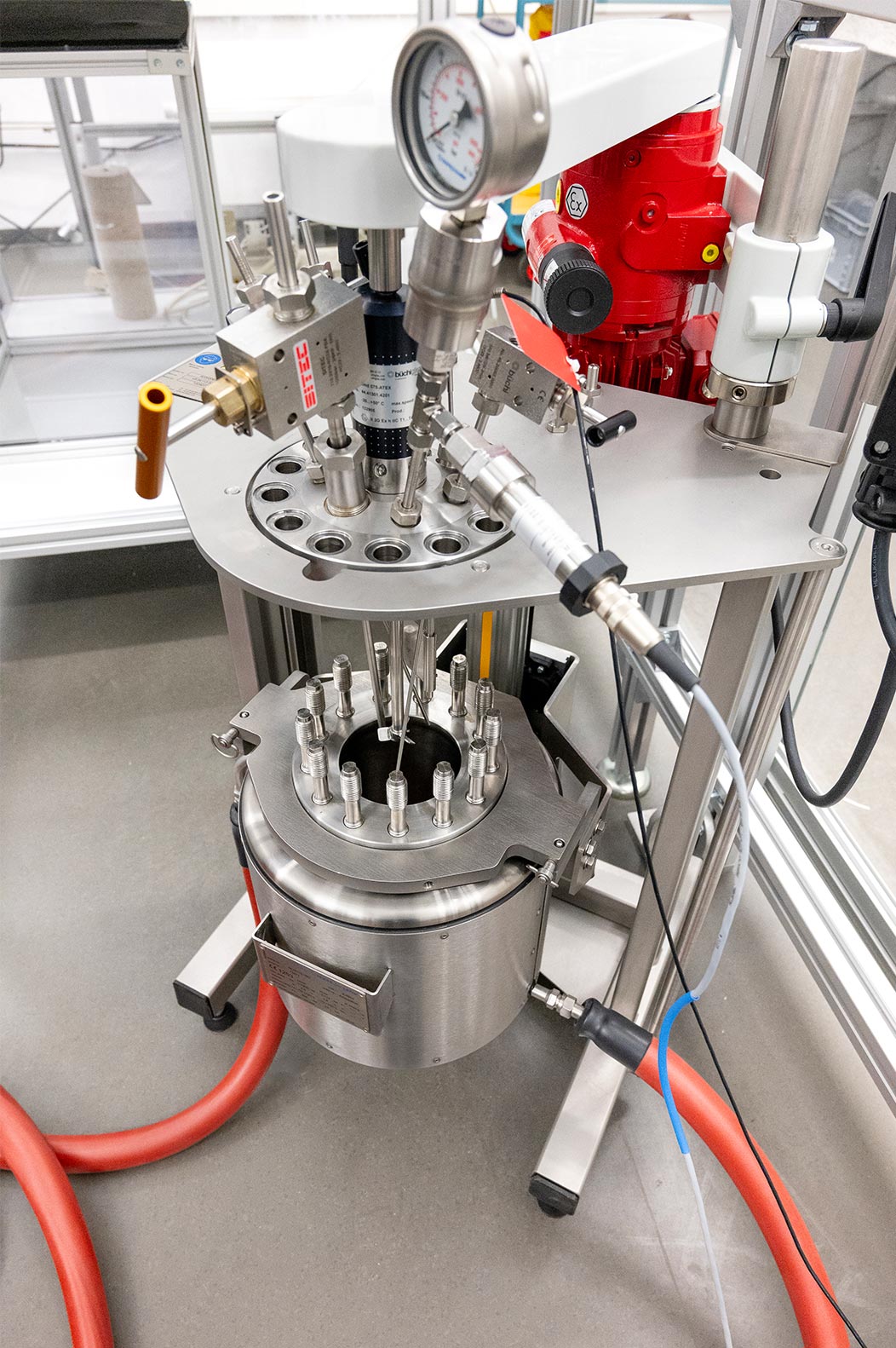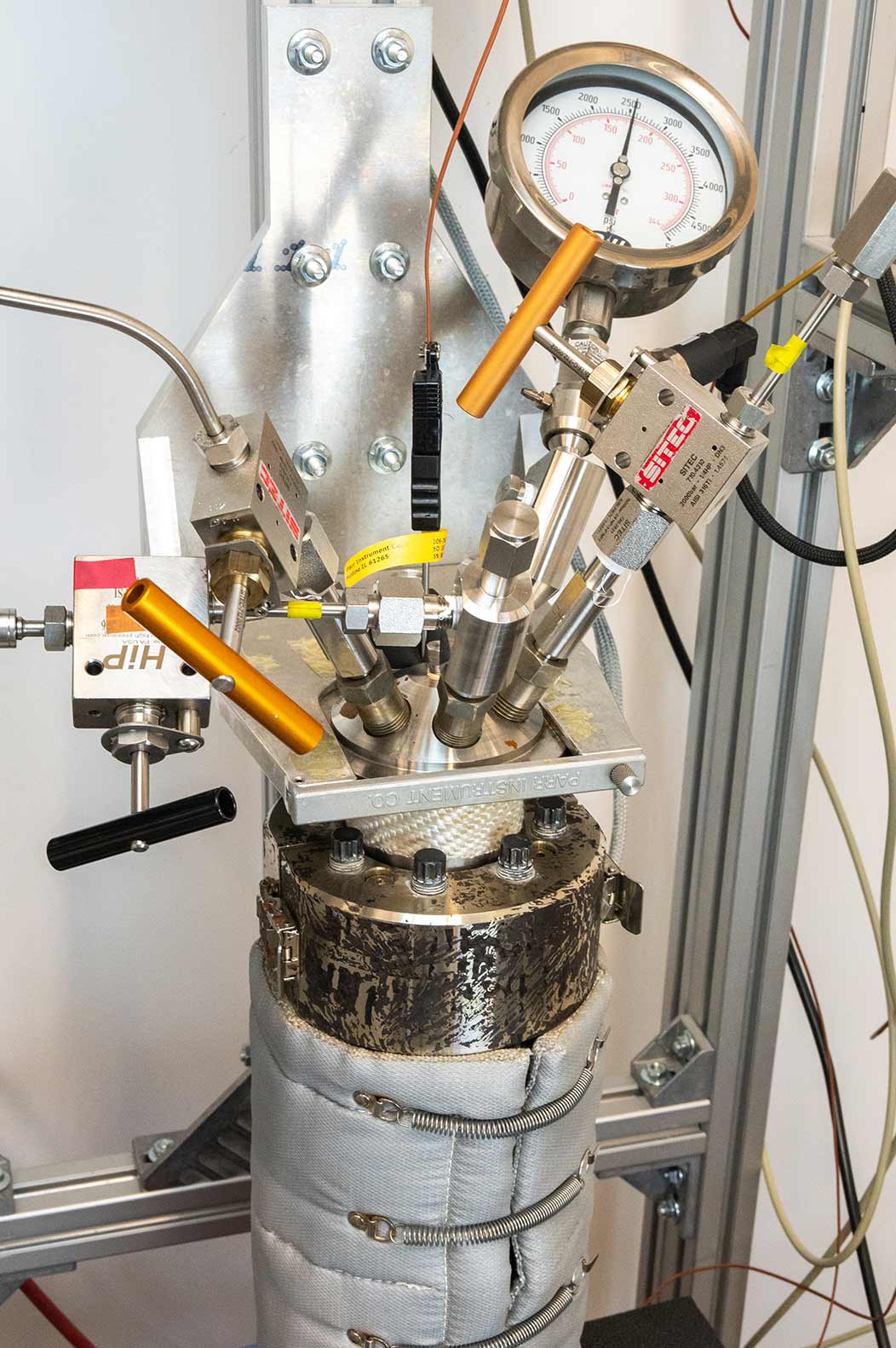TransHyDE
The federal government has provided a strong impetus for the use of hydrogen in all sectors of the energy system through its National Hydrogen Strategy (NWS). Hydrogen storage plays a crucial role in this, as hydrogen, being a gaseous energy carrier, is storable and can balance the varying demand and production of hydrogen. In addition to storing hydrogen in containers or pipes, geological formations also offer long-term storage options. The hydrocarbon industry has been using underground storage for decades to store large quantities of natural gas in the pore spaces of rocks (so-called pore storage) or in salt caverns. This project investigates whether these storage options meet high technological safety standards and to what extent they can be utilized within the infrastructure chain.
Objective
In the project "H2-Sponge: H2 storage potential of geological rock formations", the first phase of "TransHyDE" aims to establish the conditions for future safe hydrogen storage and transport infrastructures.
Alongside the exploration of usability, all safety requirements and robust concepts for monitoring such facilities, as well as the redistribution of hydrogen to users, are examined. Key points include the geological requirements for the storage and cap rock, the prioritization of sites, and the experimental investigation of rocks in contact with hydrogen (Alms et al., 2023a-c). To simulate the physical and chemical interactions underground, an experimental test rig will be constructed as part of the project. This will enable the assessment of potential hydrogen storage rocks and the integrity of the storage. Additional aspects focus on the integrity of all technical components, as well as the strategic planning of monitoring concepts for seamless oversight of all processes, and the development of processing strategies with contaminant measurements for the distribution of underground-stored hydrogen in gas networks. The goal is to formulate proposals for handling hydrogen in geological underground storage and to develop suitable infrastructure and safety concepts.
The insights gained from the project will be evaluated and incorporated into a comprehensive analysis of "Safe Infrastructure", which will form the basis for "Scalable Solutions" in the second phase of TransHyDE (Pannek et al., 2024).

